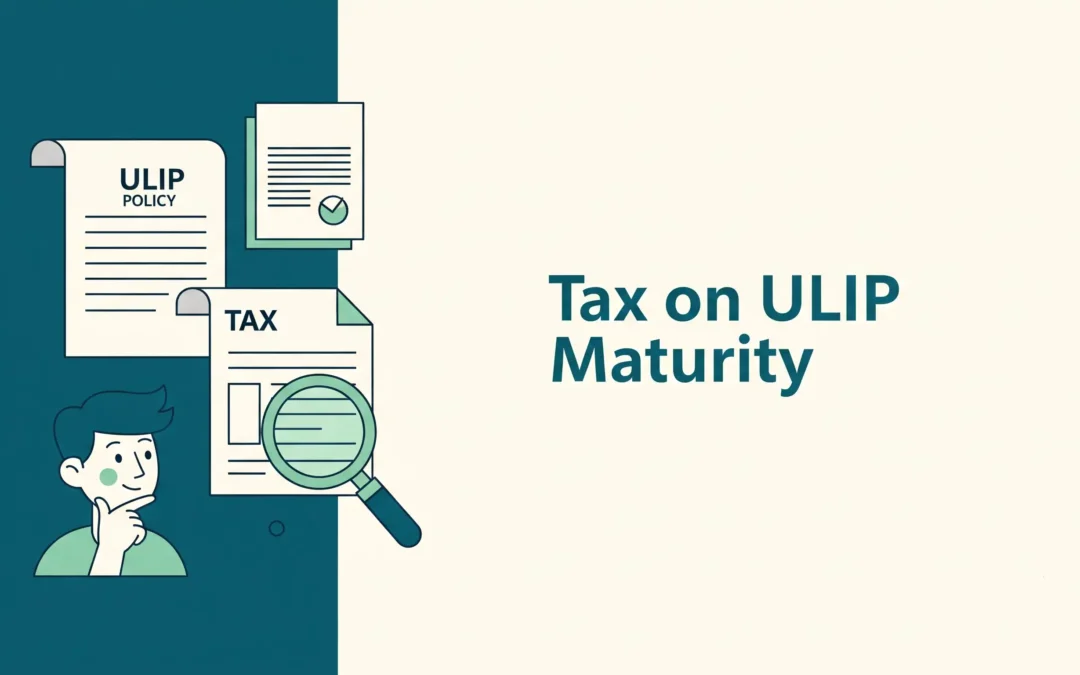Managing all your investments and insurance is a tedious task for an individual. ULIP or Unit Linked Insurance Plan makes your personal finances easier as it combines instruments like equity investing, ETFs, etc., with an insurance policy. But knowing about the taxation is equally important to understand what your net returns are.
This article will help you understand in depth about ULIP and, most importantly, its tax exemption rules in 2025. It will give you a clear picture of the rules about taxation on maturity and changes made to it.
What is a ULIP?
Insurance companies offer a hybrid financial product called a Unit Linked Insurance Plan (ULIP), which combines market-linked investments with life insurance coverage. Policyholders can invest in debt, equity, or balanced funds based on their level of risk tolerance. The premium is divided between investments and life insurance.
Key features:
- Dual benefit: a single plan that incorporates insurance and investments.
- Fund switching option: Switch between debt and equity based on market conditions
- Market-linked returns: The performance of the fund determines gains.
- Lock-in duration: five years
New ULIP Tax Rules 2025
Any ULIP policy with a combined annual premium exceeding Rs. 2.5 lakh across all policies held by an individual, issued on or after February 1, 2021, will not be eligible for tax exemption under Section 10(10D). Instead, gains will be taxable as capital gains.
During the Assessment Year 2025–2026, these changes came into effect:
| Annual Premium (per policy or combined) | Policy Issued On or After Feb 1, 2021 | Tax Treatment on Maturity |
| Rs. 2.5 lakh or less | Yes | Tax-Free (u/s 10(10D)) |
| More than Rs. 2.5 lakh | Yes | Taxable (as Capital Gains) – If held more than 12 months long-term capital Gains(LTCG) of 12.5% is applied. – If held for less than 12 months, short-term capital gains(STCG) of 20% are applied. |
Exemptions in Detail: When is ULIP Maturity Tax-Free?
Under Section 10(10D) of the Income Tax Act, the maturity amount received from a Unit Linked Insurance Plan (ULIP) may be completely tax-exempt, provided that specific requirements are fulfilled. By providing high-premium tax shelters, these exemptions seek to discourage abuse while rewarding long-term investors with legitimate insurance needs.
Let’s examine each exemption condition in more detail:
1. Policy Issued Prior to February 1, 2021: Completely Exempt
If your ULIP policy was issued before February 1, 2021, the maturity amount is fully tax-exempt, regardless of the premium amount.
- Premium per year: Rs. 3 lakh
- Even though the premium is more than Rs. 2.5 lakh, the entire Rs. 10 lakh is tax-free in 2025.
2. The condition of the sum assured must be at least ten times the annual premium.
For policies issued after April 1, 2012, to qualify for exemption under Section 10(10D), the annual premium should not exceed 10% of the sum assured. If it does, maturity proceeds may be taxable even if the policy was issued before February 1, 2021.
If the premium exceeds 10% of the sum assured, the maturity proceeds may be subject to taxes, even if the policy was issued before February 1, 2021.
For instance,
- Rs. 10 lakh is the sum assured.
- Premium per year: Rs. 1.2 lakh, then the ratio becomes 12%
- In this case, it does not qualify for an exemption
3. Continuity of Policy
In order to preserve the tax-free status granted by Sections 80C and 10(10D):
- The policy must be held for a minimum of five years to maintain tax-free status and Section 80C benefits.
- Early surrender before five years results in:
- Loss of previously claimed 80C deductions
- Taxation of maturity or surrender proceeds based on either the individual’s marginal tax rate or capital gains rules, depending on the policy’s issuance date.
4. Death Benefit: Always Completely Exempt
Among the most significant exemptions is the fact that death benefits given to nominees are completely tax-free, regardless of:
- The premium sum
- Policy phrase
- Date of issue
- This guarantees that ULIPs’ life insurance component is upheld and shielded from taxes.
Bottomline
The conclusion can be drawn that unit-linked insurance terms are a good option for investors to avail the benefit of both investment and insurance. The taxation rules depend on whether the insurance was issued before or after 1st February 2021. Generally, when it is issued before the mentioned date, the amount at maturity is tax-free up to a certain limit.
It is important that the investor goes through the rules thoroughly to avoid any confusion in the later stages.


